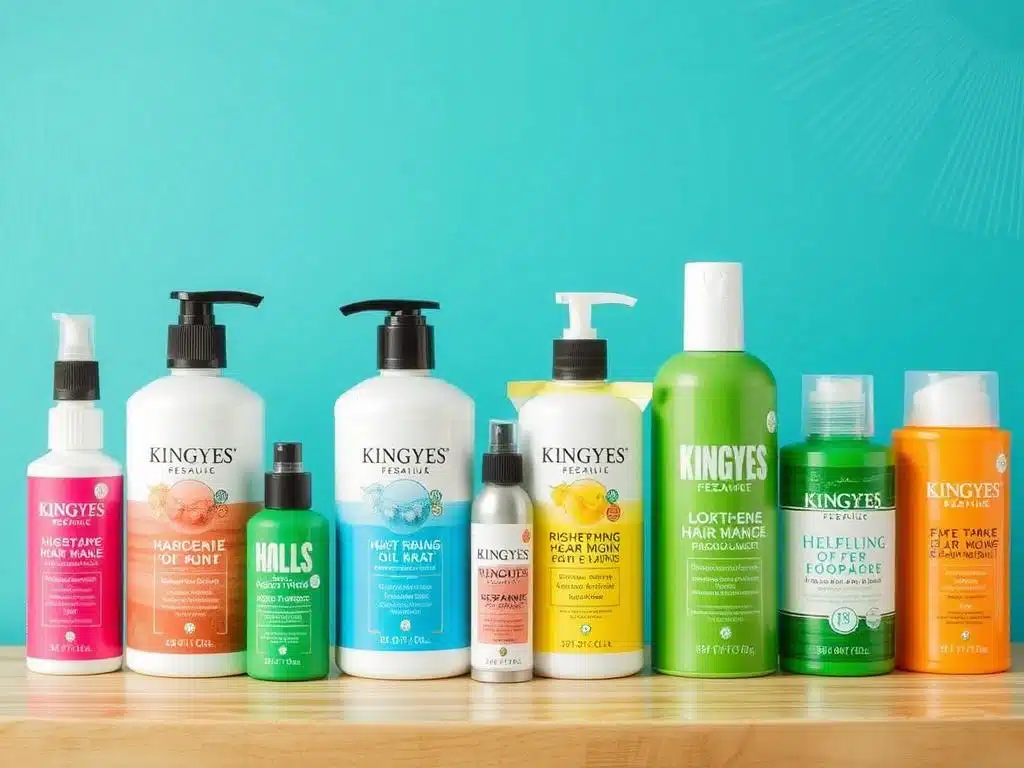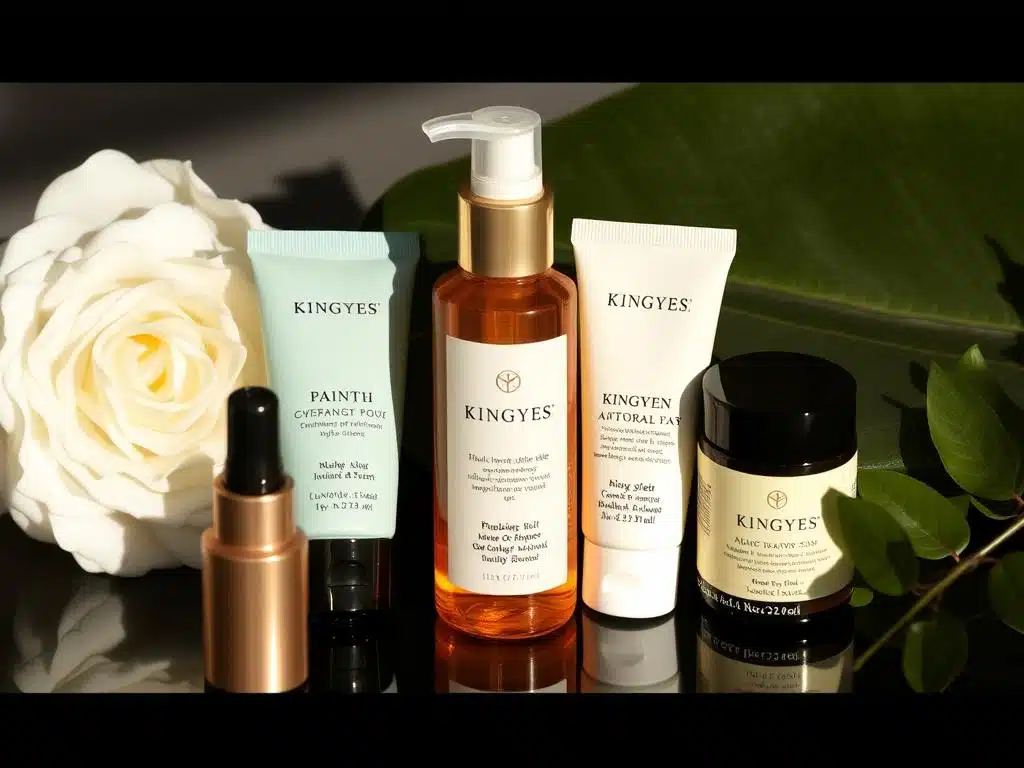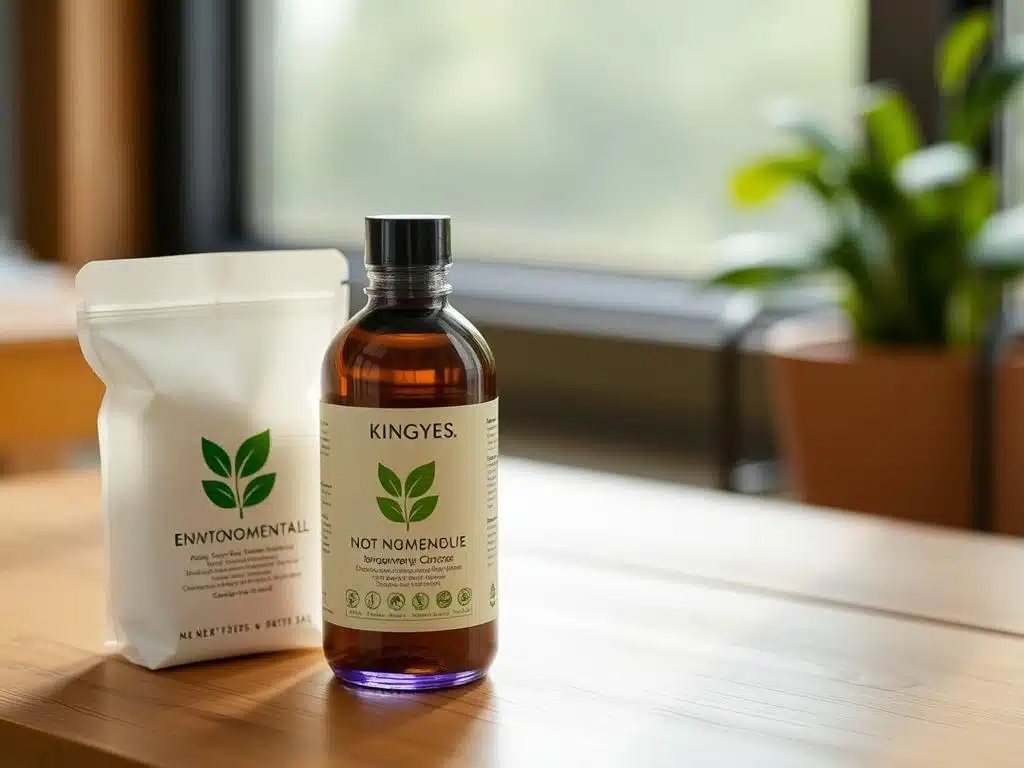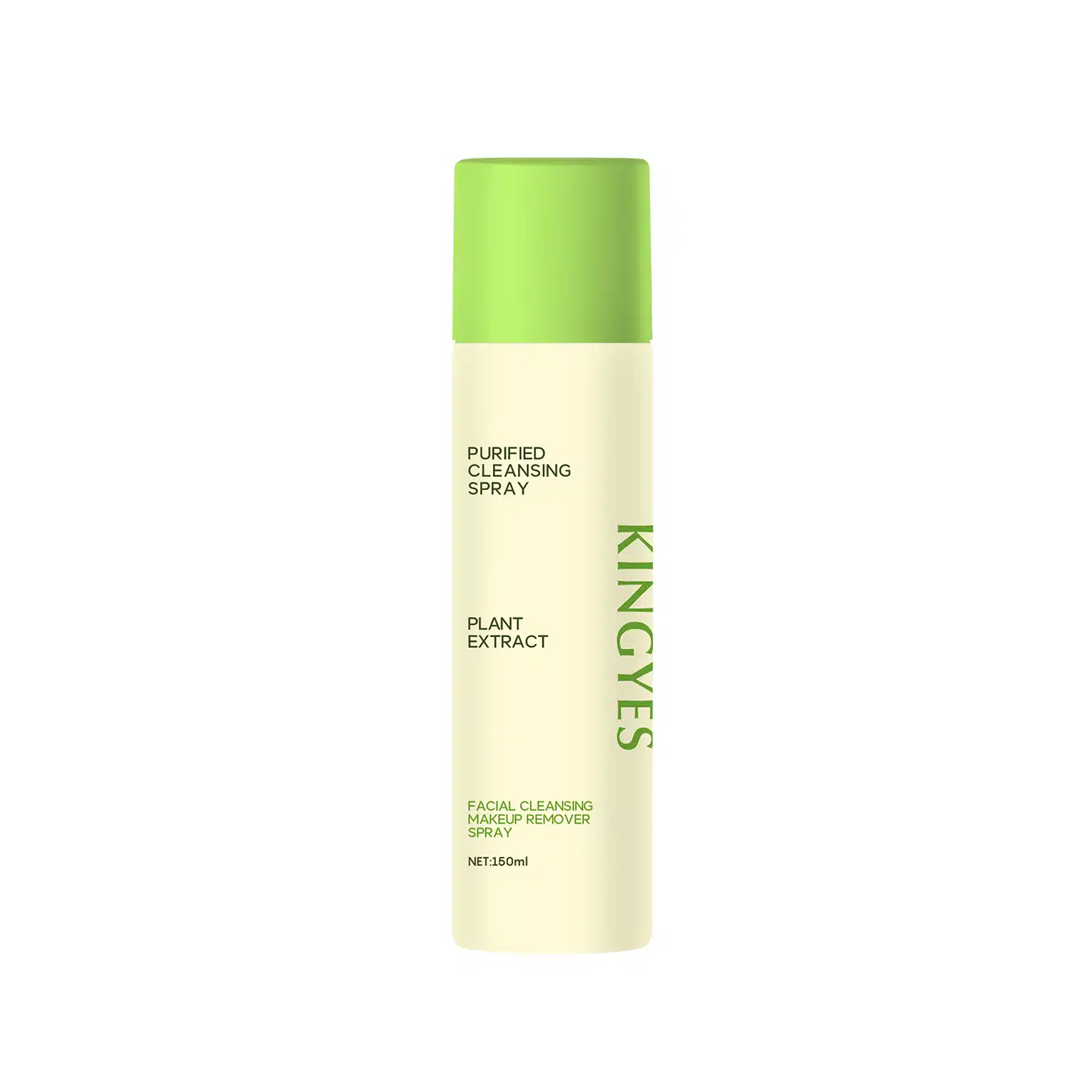
What Product Is Not Environmentally Friendly?
Table of Contents
Beyond the Eco-Friendly Label: Are You Being Greenwashed in 2024?
“Eco-friendly” has become a buzzword, but are the products marketed with this label truly better for the environment? In 2024, discerning consumers need to be aware of greenwashing – the practice of making misleading or unsubstantiated claims about the environmental benefits of a product, service, or company. This article will help you identify common greenwashing tactics, understand the impact of misleading environmental claims, and equip you with the knowledge to make informed choices that align with your values. We will also discuss products that are not environmentally friendly and explain why. Learn how to look beyond the label and support genuinely sustainable brands. You might be surprised at some of the products that practice greenwashing.
What is Greenwashing and Why is it a Problem?
Greenwashing is a deceptive marketing practice where companies make misleading or unsubstantiated claims about the environmental benefits of their products or practices. This can involve using vague or undefined terms like “eco-friendly”, “green”, or “natural” without providing clear evidence to support these claims. It is a way of making a product seem more environmentally friendly than it is. It is a tactic that many brands use. Companies’ claims are not always accurate.
Greenwashing is a problem for several reasons:
- It misleads consumers: Consumers who genuinely want to make sustainable choices may be tricked into buying products that are not as environmentally friendly as they believe. This can undermine trust in sustainable brands.
- It undermines genuine sustainability efforts: When companies greenwash, it makes it harder for consumers to identify and support brands that are truly committed to environmental responsibility.
- It allows companies to avoid making real changes: Greenwashing can be a way for companies to appear environmentally responsible without actually making significant changes to their products or practices. This is not good for the environment.
- It distracts from real environmental issues: By focusing on superficial claims, greenwashing can distract from more significant environmental problems that need to be addressed.
Greenwashing is harmful to consumers, the environment, and businesses that are genuinely committed to sustainability. It is important to be aware of the environmental impact of your purchases.
Common Greenwashing Tactics to Watch Out For
Companies use a variety of tactics to greenwash their products. Here are some common greenwashing examples to watch out for:
- Vague or Unclear Language: Using terms like “eco-friendly”, “green”, “natural”, or “sustainable” without providing specific definitions or evidence. Many companies use the term “green.”
- Irrelevant Claims: Highlighting a minor environmental attribute while ignoring more significant environmental impacts. For example, a product might be labeled as “made with recycled materials” even if only a small percentage of the product is actually made from recycled content.
- Hidden Trade-offs: Promoting one eco-friendly aspect of a product while downplaying or ignoring other negative environmental impacts. For instance, a company might highlight that their packaging is recyclable but fail to mention the large carbon footprint associated with the product’s manufacturing process.
- Lack of Proof or Certification: Making environmental claims without providing any evidence or third-party certification to back them up. Always look for proof of sustainability claims.
- False or Misleading Labels: Using fake eco-labels or certifications that are not recognized by reputable third-party organizations. Be sure to research any certifications.
- Exaggerated Claims: Overstating the environmental benefits of a product or service. Many companies exaggerate the product features to mislead consumers.
- Bait and Switch: Advertising an eco-friendly product or practice but then not delivering on that promise. This is a deceptive tactic.
Being aware of these tactics can help you identify potential greenwashing and make more informed purchasing decisions. You should be critical of products that claim to be eco-friendly.
Products That Are Often Greenwashed
Certain products are more prone to greenwashing than others. Here are some examples of products that you should be particularly critical of:
- Fast Fashion: The fast fashion industry is notorious for its negative environmental impact, including high water consumption, pollution from textile dyeing and finishing, and the use of synthetic fabrics derived from crude oil. Fast fashion brands often use greenwashing to make their products seem more sustainable than they are. They might highlight the use of organic cotton in a small percentage of their garments while ignoring the larger environmental issues associated with their business model. The fast fashion model encourages rapid consumption and disposal, leading to massive amounts of textile waste in landfills. Brands like H&M have made an effort to appear more eco-friendly.
- Single-Use Plastics: Products like plastic water bottles, plastic bags, and disposable cutlery are often marketed as “recyclable,” but in reality, many of these items end up in landfills or pollute the environment. The recycling rates for many types of plastic are very low. Single-use plastic is a major source of pollution. Plastic bags are particularly harmful to the environment.
- Cleaning Products: Many conventional cleaning products contain harmful chemicals that can pollute the air and water. Some brands use greenwashing to make their cleaning products seem more environmentally friendly than they are by using terms like “natural” or “plant-based” without providing specific information about the ingredients or their sourcing. A popular greenwashed brand is Seventh Generation.
- Beauty and Personal Care Products: The beauty industry is increasingly using greenwashing to appeal to environmentally conscious consumers. Products might be labeled as “organic,” “natural,” or “eco-friendly” without meeting any specific standards. Some eco-friendly products are not as sustainable as they seem. Look for products that meet specific criteria.
- Coffee Pods: Coffee pods are marketed for their convenience. Some brands offer recycling services for their pods. However, these are not always effective and many pods are not recycled. They create a lot of waste and the global coffee industry has been criticized for unsustainable practices.
It’s important to look beyond the marketing claims and research the environmental impact of these products before making a purchase. You should always be critical of environmental claims. You should find products that meet your standards.
The Environmental Impact of Single-Use Plastics
Single-use plastic products, such as water bottles, plastic bags, straws, and food packaging, have a significant negative impact on the environment. They are a major source of pollution. Here’s a closer look at their environmental impact:
- Pollution: Single-use plastics often end up as litter, polluting streets, parks, and waterways. They are often found in the ocean, where they can harm marine life. Many marine animals mistake plastic for food, which can lead to injury or death.
- Resource Depletion: Plastics are typically made from fossil fuels, which are non-renewable resources. The extraction and processing of fossil fuels contribute to air pollution and greenhouse gas emissions.
- Waste Generation: Single-use plastics contribute to the growing problem of plastic waste. Much of this waste ends up in landfills, where it can take hundreds of years to decompose, if it decomposes at all.
- Recycling Challenges: While some single-use plastics are technically recyclable, many are not effectively recycled due to contamination, lack of infrastructure, or economic factors. The recycling process itself also requires energy and resources.
- Microplastics: Plastics can break down into tiny pieces called microplastics, which can contaminate water, soil, and even the air. Microplastics have been found in the food chain and even in human bodies, raising concerns about their potential health impacts.
Reducing our reliance on single-use plastics is crucial for protecting the environment. There are many reusable alternatives available. Always look for products that meet your environmental standards.
Fast Fashion and its Environmental Consequences
The fast-fashion industry, characterized by cheap, trendy clothing that is rapidly produced and discarded, has a devastating impact on the environment. This is often seen as the opposite of eco-friendly. Here are some of the key environmental consequences:
- Water Consumption and Pollution: Textile production, particularly cotton farming, requires vast amounts of water. The dyeing and finishing processes often use harmful chemicals that can pollute waterways.
- Greenhouse Gas Emissions: The fast-fashion industry is a significant contributor to greenhouse gas emissions due to energy-intensive manufacturing, transportation, and the decomposition of textile waste in landfills. The industry has a large carbon footprint.
- Waste Generation: The rapid turnover of fashion trends encourages consumers to discard clothing quickly, leading to massive amounts of textile waste. Much of this waste ends up in landfills, where it can take many years to decompose. It is terrible for the environment.
- Synthetic Fabrics: Many fast-fashion garments are made from synthetic fabrics like polyester, which are derived from crude oil. These fabrics are not biodegradable and can shed microplastics when washed, contributing to plastic pollution. They are harmful to the environment.
- Exploitative Labor Practices: In addition to its environmental impact, fast fashion often relies on exploitative labor practices in developing countries, including low wages, unsafe working conditions, and long hours.
Choosing sustainable alternatives to fast fashion, such as buying secondhand clothing, supporting ethical and sustainable brands, and investing in durable, high-quality garments, can help mitigate these negative impacts. You should look for products that are made to last. You should also be wary of unsubstantiated claims.
Are Cleaning Products Truly Eco-Friendly?
Many conventional cleaning products contain harsh chemicals that can be harmful to the environment and human health. While some brands market their products as “eco-friendly” or “green”, it’s important to look beyond the label and scrutinize the ingredients and packaging. There are many cleaning products that practice greenwashing.
Here are some factors to consider when evaluating the environmental friendliness of cleaning products:
- Ingredients: Look for products that use plant-based ingredients and avoid harsh chemicals like bleach, ammonia, phosphates, and synthetic fragrances. Plant-based ingredients are generally more sustainable.
- Biodegradability: Choose products that are biodegradable, meaning they can break down naturally without leaving behind harmful residues. This is better for the environment.
- Packaging: Opt for products with minimal packaging or packaging that is made from recycled or renewable materials. Some companies offer refill options to reduce packaging waste.
- Certifications: Look for certifications from reputable third-party organizations, such as Ecocert, USDA Organic, or Safer Choice, which indicate that the product meets certain environmental and safety standards.
- Concentrated Formulas: Concentrated formulas can reduce packaging and transportation impacts, as they require less water and smaller containers. They are more eco friendly.
Be wary of vague claims like “natural” or “eco-friendly” without specific information to back them up. Research the brand and its ingredients to make an informed decision. You should also check if products are non-toxic.
Understanding Carbon Footprints and ESG
Two important concepts related to sustainability are carbon footprints and ESG (Environmental, Social, and Governance).
- Carbon Footprint: A carbon footprint is the total amount of greenhouse gas emissions generated by an individual, organization, event, or product. It is typically measured in metric tons of carbon dioxide equivalent (CO2e). In the context of products, a carbon footprint includes the emissions associated with raw material extraction, manufacturing, transportation, use, and disposal. Reducing carbon emissions is crucial for mitigating climate change. Many companies want to reduce their carbon footprint, or become net-zero. Many consumers want to reduce their carbon footprint.
- ESG: ESG stands for Environmental, Social, and Governance. It is a framework used to assess a company’s sustainability and ethical performance across three key areas:
- Environmental: This includes factors like a company’s carbon footprint, resource use, waste management, and pollution.
- Social: This covers issues such as labor practices, human rights, community engagement, and product safety.
- Governance: This relates to a company’s leadership, board diversity, executive compensation, and business ethics.
Companies with strong ESG performance are often considered to be more sustainable and socially responsible. Many investors now use ESG criteria to evaluate companies and make investment decisions. There are many companies that are striving to meet environmental standards. There are also many companies that are focused on social responsibility.
How to Identify Truly Sustainable Products
With greenwashing on the rise, it can be challenging to identify products that are genuinely sustainable. Here are some tips to help you make informed choices:
- Look Beyond the Label: Don’t rely solely on marketing claims like “eco-friendly” or “green”. Dig deeper to understand the product’s true environmental impact.
- Read the Ingredient List: Familiarize yourself with ingredients to avoid and look for products that use natural, organic, and plant-based ingredients.
- Research the Brand: Visit the brand’s website and look for information about their sustainability practices, certifications, sourcing policies, and manufacturing processes. Look for transparency and specific details.
- Look for Third-Party Certifications: Reputable certifications from organizations like USDA Organic, Ecocert, B Corp, Fair Trade, and Cradle to Cradle can provide assurance that a product meets certain environmental and social standards.
- Consider the Packaging: Choose products with minimal packaging or packaging that is made from recycled, reusable, or compostable materials. Look for sustainable packaging.
- Evaluate the Product’s Lifecycle: Think about the product’s entire lifecycle, from raw material extraction to disposal. Consider how long the product will last, whether it can be repaired or repurposed, and how it will be disposed of at the end of its life.
- Support Sustainable Brands: Vote with your wallet by supporting brands that are genuinely committed to sustainability. Look for brands that prioritize environmental and social responsibility throughout their operations.
By following these tips, you can become a more discerning consumer and make choices that align with your values. This will help you to find products that are better for the environment.
| Category | Unsustainable Practices | Sustainable Alternatives |
|---|---|---|
| Single-Use Plastics | Using disposable plastic water bottles, straws, bags, and food packaging. | Using reusable water bottles, straws, bags, and food containers. Choosing products with minimal or no plastic packaging. |
| Fast Fashion | Buying cheap, trendy clothing that is quickly discarded. | Buying secondhand clothing, supporting ethical and sustainable brands, investing in durable, high-quality garments. |
| Conventional Cleaning Products | Using cleaning products with harsh chemicals that can pollute the air and water. | Using cleaning products with plant-based ingredients, choosing biodegradable options, opting for concentrated formulas. |
| Products with Microbeads | Using products with tiny plastic beads that pollute waterways and harm marine life. | Using products with natural exfoliants like sugar, salt, or coffee grounds. |
| Products Tested on Animals | Buying products from companies that test on animals. | Choosing cruelty-free products certified by organizations like Leaping Bunny. |
| Products with Harmful Chemicals | Using products containing parabens, phthalates, sulfates, synthetic fragrances, and other potentially harmful ingredients. | Choosing products with natural, organic, and plant-based ingredients. Avoiding products with known harmful chemicals. |
| Products with Excessive Packaging | Buying products with excessive or unnecessary packaging, much of which is not recyclable. | Choosing products with minimal packaging or packaging that is made from recycled, reusable, or compostable materials. |
The Future of Sustainability and Consumer Choices
The future of sustainability depends on the choices we make as consumers. As awareness of environmental issues grows, consumer demand for sustainable products is increasing. This is putting pressure on companies to adopt more environmentally responsible practices. There is a consumer demand for change.
Here are some trends that are shaping the future of sustainability:
- Increased Transparency: Consumers will demand greater transparency from companies regarding their environmental and social impacts. They will want to know where products come from, how they are made, and what their environmental footprint is.
- Circular Economy: The concept of a circular economy, where resources are reused and recycled rather than being discarded, will gain traction. This will involve designing products for durability, repairability, and recyclability.
- Regenerative Practices: Beyond simply reducing harm, there will be a growing focus on regenerative practices that actively restore and renew natural ecosystems. This includes practices like regenerative agriculture.
- Technological Innovations: Technology will play an increasingly important role in creating sustainable solutions, such as developing new materials, improving recycling processes, and tracking supply chains.
- Collaboration and Partnerships: Addressing complex environmental challenges will require collaboration among businesses, governments, NGOs, and consumers.
By making informed choices and supporting sustainable brands, consumers can help drive positive change and create a more sustainable future. We can all make more sustainable choices.
What is being done to tackle greenwashing?
Tackling greenwashing requires a multi-faceted approach involving government regulations, industry initiatives, and consumer awareness. Governments are starting to implement stricter regulations on environmental claims made by companies. This includes guidelines on the use of terms like “eco-friendly”, “sustainable”, and “green”. The aim is to prevent misleading claims and ensure that environmental claims are substantiated.
Industry initiatives also play a role in tackling greenwashing. Some companies are voluntarily adopting stricter standards for environmental labeling and marketing. They are also working to improve transparency and provide consumers with more detailed information about their products’ environmental impact. Many brands are working to reduce their environmental impact. Industry associations are developing guidelines and best practices for sustainability claims.
Consumer awareness is crucial for tackling greenwashing. As consumers become more informed about greenwashing tactics, they can make more discerning choices and demand greater transparency from companies. There are many organizations working to educate consumers about greenwashing and empower them to make sustainable choices.
Here are some key initiatives aimed at tackling greenwashing:
- Stricter Regulations: Governments are implementing regulations to prevent misleading environmental claims.
- Industry Standards: Industry associations are developing guidelines for sustainability claims.
- Third-Party Certifications: Independent organizations are providing certifications to verify environmental claims.
- Consumer Education: Organizations are working to educate consumers about greenwashing.
- Increased Transparency: Companies are being encouraged to be more transparent about their environmental practices.
Here are some things to remember:
- Greenwashing is a deceptive marketing practice that misleads consumers about the environmental benefits of products or practices.
- Common greenwashing tactics include using vague language, making irrelevant or exaggerated claims, hiding trade-offs, and lacking proof or certification.
- Single-use plastics, fast fashion, and some cleaning products are often greenwashed.
- Single-use plastics have a significant negative environmental impact due to pollution, resource depletion, waste generation, and recycling challenges.
- The fast-fashion industry contributes to water consumption and pollution, greenhouse gas emissions, waste generation, and the use of synthetic fabrics.
- When evaluating cleaning products, consider ingredients, biodegradability, packaging, certifications, and whether the formulas are concentrated.
- Understanding carbon footprints and ESG (Environmental, Social, and Governance) can help consumers make more informed choices.
- To identify sustainable products, look beyond the label, read ingredient lists, research brands, look for certifications, consider packaging, evaluate the product’s lifecycle, and support sustainable brands.
- The future of sustainability involves increased transparency, a circular economy, regenerative practices, technological innovations, and collaboration.
- Consumers can drive positive change by making informed choices and supporting sustainable brands.
By staying informed and making conscious choices, we can all contribute to a more sustainable future. We can also help to reduce the amount of greenwashing in the marketplace. It is important to be critical of environmental claims made by companies. We should all strive to make sustainable choices that are better for the environment. We need to be aware of products that pollute the environment. We need to be aware of the dangers of fast-fashion. We should look for sustainable products and sustainable brands. There is a growing consumer demand for products that are environmentally friendly. It is important to look for products that are made from recycled materials. We should also try to avoid products that contain harmful chemicals. We should also avoid products that use unsubstantiated claims. Companies should be transparent about their environmental impact. They should also be committed to environmental responsibility. Companies should strive to meet environmental standards. We should look for products that are made to last. We should avoid products that are designed to be thrown away after a short period of time. We should also try to reduce our reliance on single-use plastic. There are many sustainable alternatives available. We can all make a positive impact on the environment by making sustainable choices. We should be careful of products that greenwash. Always be sure to check the product’s ingredients. Be wary of misleading claims. There are many products that are harmful to the environment. We should look for products that use sustainable packaging. We should also look for products that use plant-based ingredients. Many companies practice greenwashing. We should be aware of the most common greenwashing tactics. This will help us to make more informed choices. We should try to reduce our reliance on products that use single-use plastic. By making informed choices, we can help to create a more sustainable future.
Comments

What Makes Hair Dye Permanent?
Ever wondered what gives permanent hair dye its long-lasting power?

How To Make Hair Products To Sell?
So, you’re passionate about hair care and dream of creating your own line of hair products?

Is Sephora Ecommerce?
Sephora is a name synonymous with beauty, known for its vast selection of prestige beauty products and immersive retail experiences.


How Damaging Is Permanent Hair Dye?
Curious about how much permanent hair dye can affect the health of your hair?
- +86 151 1839 7303
- [email protected]
- Mon-Sun 07:00-23:00
Tags

How To Sell Cosmetics On WeChat?
Are you ready to tap into the world’s largest beauty market?

How To Sell Cosmetics On Shopee?
Looking to sell cosmetics and tap into the booming e-commerce market of Southeast Asia?

How To Cooperate With Cosmetics Factories?
In the dynamic and competitive beauty industry, partnering with the right cosmetic manufacturer is paramount to the success of your cosmetics business.






